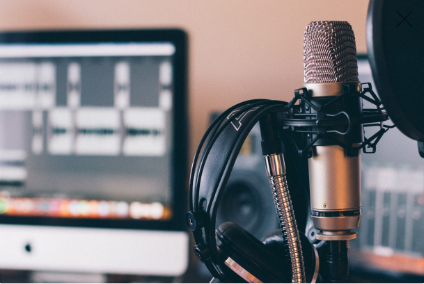

Quick Links
Quick Links
If you’re new to podcasting, you may wonder how to edit your audio to make it sound great. Don’t worry, it’s not as complicated as it seems! With a little time and effort, you can produce professional-sounding episodes that your listeners will love. This blog post will share podcast editing tips and tricks like a pro. From choosing the right software to cleaning up your audio, following these steps will help you take your podcast to the next level.
What is Podcast Editing?
Podcast editing is cutting and splicing audio files to create a finished episode. It can clean up dialogue, remove pauses and fill in gaps, or add sound effects and music.
Podcast editing is a critical part of the production process, and it’s important to take the time to do it right. Here are some tips and tricks to help you get the most out of your podcast editing:
- Use an external editor: External editors offer more features and flexibility than built-in editors. They also allow you to work on your episodes offline, which can be a big time-saver.
- Get familiar with the tools: Take some time to learn about the different podcast editing tools available, and find the ones that work best for you.
- Edit as you go: Keep an eye out for spots that may need to be edited later on as you record your podcast. This will save you time in the long run.
- Make backups: Be sure to back up your episodes often in case something happens to your original files.
- Listen back: Always listen to your episodes before you release them to make sure they sound just how you want them to.
The Benefits of Podcast Editing
Podcast editing is a process that can help you to improve the quality of your podcast and make it more enjoyable for your listeners. It can also be used to remove unwanted noise, add effects, and improve the overall sound of your recording. In addition, editi
The Different Types of Podcast Editing Software
Different types of podcast editing software offer different features and suites of tools. Some are more comprehensive than others, while others focus on a particular aspect of podcasting. Here’s a rundown of some of the most popular podcast editing software:
Audacity is a free and open-source audio editor with a wide range of features for recording, editing, and mixing audio. It’s a popular choice for podcasters due to its ease of use and wide range of features.
GarageBand is a digital audio workstation developed by Apple Inc. It comes pre-installed on all new Mac computers and offers a user-friendly interface for creating and editing audio. GarageBand also has built-in podcast support, making it a popular choice among podcasters.
Adobe Audition is a professional audio editing program from Adobe Systems. It offers many powerful tools for recording, editing, and mixing audio, making it a popular choice among professional podcasters.
Hindenburg Journalist is an all-in-one tool for radio journalists and podcasters. It offers an intuitive interface for recording, editing, and exporting audio and built-in support for publishing to podcast platforms.
How to Choose the Right Podcast Editing Software for You
When it comes to podcast editing, there is no one-size-fits-all solution. The best podcast editing software for you will depend on your specific needs and preferences. Here are some factors to consider when choosing editing software:
Ease of use: Look for user-friendly and easy-to-navigate software. You don’t want to spend hours figuring out how to use the software.
Features: Make sure the software has all the features you need. Some common features include adding music, sound effects, and transitions; recording and editing multiple tracks; and exporting files in different formats.
Compatibility: Check that the software is compatible with your computer operating system and other audio equipment.
Pricing: Podcast editing software can range in price from free to several hundred dollars. Choose the option that fits your budget and offers the necessary features and functionality.
Tips and Tricks for Editing Your Podcast
The first step to editing your podcast is to decide what segments you want to include and in what order. Then, start by recording your intro and outro. These will be the bookends of your podcast episode, so make sure they’re engaging and set the tone for the rest of the episode.
Next, it’s time to start recording your segment content. If you’re recording multiple segments, it’s a good idea to record them all in one sitting so you can keep the energy and flow going throughout the episode. Once your content is recorded, it’s time to start editing.
If you’re new to audio editing, you should keep a few things in mind. First, when cutting out sections of audio, always cut on silence. This will help avoid any awkward gaps in the audio. Second, take your time when editing. Getting everything right so your podcast sounds polished and professional is important.
Finally, once you’ve edited your content to its final form, it’s time to add any music or sound effects you want to include. This can help set the mood and atmosphere of your podcast episode. Just be sure not to overdo it – a few well-placed tracks can make a big impact without being overwhelming.
Conclusion
If you’re looking to get into podcasting or are already a podcast host wanting to up your editing game, these tips and tricks will help you create a polished and professional-sounding show. From leveling your audio to removing background noise, the right editing can make all the difference in how your podcast is received. Click here to open a free account and start your hiring process today.
